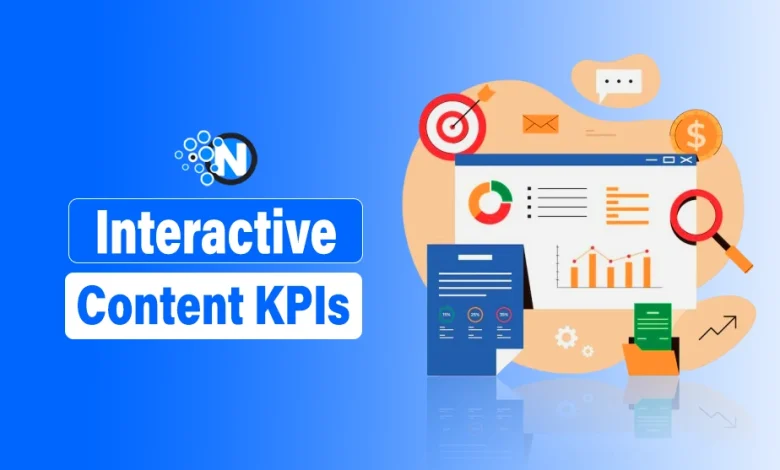Stop Tracking Clicks: Real KPIs That Show if Interactive Content Works

Clicks are easy to get. They happen in a blink, an instinctive tap, a twitch of curiosity. And yet, entire marketing strategies still cling to them as if they mean something deep. But here’s the truth: clicks are noise without context.
They don’t tell you if someone understood your content, felt confident, or cared. Especially in interactive tools, calculators, quizzes, pickers, clicks are just dots on a chart. The real story lives between those dots. In the thoughtful pauses. The moment a user reconsiders an input. The second is when they feel clarity enough to take the next meaningful step.
That’s what we want: signals that show understanding, trust, and readiness to act. Signals that reflect real engagement, not surface-level activity. Relying solely on clicks overlooks those subtle, powerful shifts. As highlighted in the Forbes article on engaging your audience with interactive content, interactive content can significantly enhance user involvement and provide more meaningful data.
In this blog post, I will explain the key interactive content KPIs you should track instead of just tracking clicks.
Let’s start!
Interactive Content KPIs that Work

1. Confidence in Decision-Making: The KPI No One’s Talking About
Ask anyone if they liked using an interactive tool, and most will say yes. But ask them if it helped them make a decision, and the answers get more interesting. Decision confidence is one of the clearest signs that interactive content is doing its job. It reflects whether the experience clarified, simplified, or de-risked a choice in the user’s mind.
How to Measure Confidence
Consider including a single confidence checkpoint near the end of your content, something like, “How confident do you feel about your choice?” on a simple scale. When users self-report high confidence after an interaction, that’s a win. If they’re uncertain or doubtful, it might be a signal your content isn’t clear enough, or is asking for a decision they’re not ready to make.
Tracking shifts in confidence can also illuminate the effectiveness of A/B testing variations. For instance, if version A of a pricing calculator boosts confidence by 23% over version B, you’ve found more than a preference; you’ve found proof of clarity.
To bolster user confidence in decision-making, consider enhancing conversions through interactive landing pages, which engage users more effectively than static content. And to make those metrics matter, it’s vital to align them with broader outcomes, just like the WSJ emphasizes in their coverage of connecting marketing KPIs to business objectives, where clarity and customer value take the lead.
Localization Insights Through Confidence
Confidence data also translates beautifully across markets. A tool that builds confidence in one region but not another hints at deeper localization issues—whether tone, cultural cues, or the structure of the decision-making flow. It opens the door to refine messaging in a way that’s respectful, contextual, and precise.
2. Input Accuracy: The Hidden Metric That Shows Users Are Thinking
Most marketers treat data entry as a necessary evil, something to get through before showing results. But input behavior is rich with insight. When a user pauses, revises, or re-enters data, they’re not fumbling. They’re thinking.
Corrections, especially voluntary ones, signal that users are paying attention. They’re engaged, trying to get it right. And that’s gold. Because while clicks can be accidental, input revisions almost never are.
Patterns That Reveal Meaning
You can track this subtly. Measure how often users go back and change answers. Look at patterns—do they consistently adjust certain fields? That could point to unclear instructions or unfamiliar terminology. Or maybe it shows where they’re weighing multiple options.
Even simple tools can expose complexity in surprising places. Say a user adjusts their income three times in a budgeting calculator. That might reflect uncertainty about what to include. Or perhaps discomfort with disclosing something personal. Either way, it’s a learning opportunity.
Design and Localization Implications
Design-wise, these insights are invaluable. They help UX teams streamline flows and identify cognitive friction. And from a strategic standpoint, input accuracy data can inform more reliable localization delivery with an automated API, ensuring that prompts and formats adapt to regional norms without manual guesswork.
3. Behavioral Shifts After Interaction: The Long Shadow of a Good Experience
It’s easy to focus on what happens during a quiz or tool, but what about right after? Post-click behavior is often more revealing than anything that happened inside the content itself. Because when users stick around, return later, or act decisively, it’s not an accident. It’s a result. A really good one.
Imagine a product finder that funnels users toward the right category. A great one won’t just end the session, it will send users deeper into the site, energized with clarity and purpose. They’ll glide into product pages with more intent, compare fewer options, bounce less, and convert more confidently. That’s not just interaction. That’s direction.
What happens after the interaction is a reflection of how much value was truly delivered. If users are wandering, abandoning, or circling back to try again, your tool might not be solving the right problem—or not solving it well enough. But when behavior sharpens—when people navigate with intention—that’s the sound of clarity landing.
How to Track Behavioral Shifts
You can begin surfacing these shifts through behavioral tagging and session mapping. Monitor how users behave in the next few clicks after using a tool. Are they skipping support pages? Jumping straight to checkout? Those little jumps tell you how prepared they feel to act. And how much friction your content just erased.
Behavioral shifts can also flag mismatches between what your tool suggests and what the user actually wants. If a quiz steers someone toward an enterprise plan, but they immediately explore entry-level pricing afterward, there’s a disconnect in either the logic or the perceived value.
Practical Ways to Leverage These Insights
Want to use behavioral KPIs effectively? Consider:
- Tagging key pathways post-interaction: Set up clickstream tracking from your interactive tool to conversion events. Look for trends in user drop-off or acceleration.
- Comparing pre-tool vs. post-tool session behavior: Do users spend less time browsing aimlessly? Are they reaching decisions faster?
- Testing follow-up content: Insert tailored CTAs or helpful links after tool completion to gently nudge users toward high-value next steps.
- Creating feedback loops: Ask users what they expected after completing the tool. Did the outcome meet their goals? Their answers are priceless for tuning future logic and flows.
4. Localized Relevance: How Subtle KPIs Guide Smarter Adaptation
Interactive content doesn’t live in a vacuum. What resonates in one region can flop in another—not because the content is bad, but because the context is wrong. This is where the more nuanced KPIs—like decision confidence and behavioral shifts- become your north star.
Say your AI tool performs brilliantly in the U.S., but users in Germany show lower completion rates and confidence. That’s not a translation issue, it’s a trust issue. Perhaps the framing of the questions feels too casual. Or the decision logic doesn’t align with local buyer psychology. Maybe even the color scheme sends a signal that’s interpreted differently.
These aren’t obvious problems. They don’t show up in click data. But they’re painfully clear in experiential KPIs. And once identified, they can be addressed in ways that are scalable and tech-driven.
Automated localization platforms benefit enormously from this kind of feedback. Because instead of just swapping language, you’re optimizing intent. Real-time performance data, fed back into systems that support localization, can evolve your content at a micro level, without gutting the UX or rewriting from scratch.
Smarter localization isn’t about mimicking, it’s about adapting. And the signals that guide that adaptation? They’re hiding in the space between the clicks.
Engagement with Integrity: Moving Beyond Vanity Metrics
It’s tempting to chase engagement. To make tools that dazzle, surprise, and entertain. But good interactive content doesn’t just keep someone busy, it moves them somewhere better.
That movement, and the integrity of it, shows up in real KPIs. Not just time-on-page or interaction counts, but in the way people behave after they’ve been given something useful. Do they return? Do they act with clarity? Do they remember you?
These aren’t abstract goals. They’re measurable, meaningful, and deeply aligned with what marketers actually want: trust, loyalty, action. These layered conversions—micro moments of interest, macro decisions of commitment—reveal how and why users decide to act.
By shifting focus to decision confidence, input precision, post-interaction flow, and contextual fit, teams can build content that’s not only engaging but also empowering. And when quality content empowers, people remember, come back, and convert.




